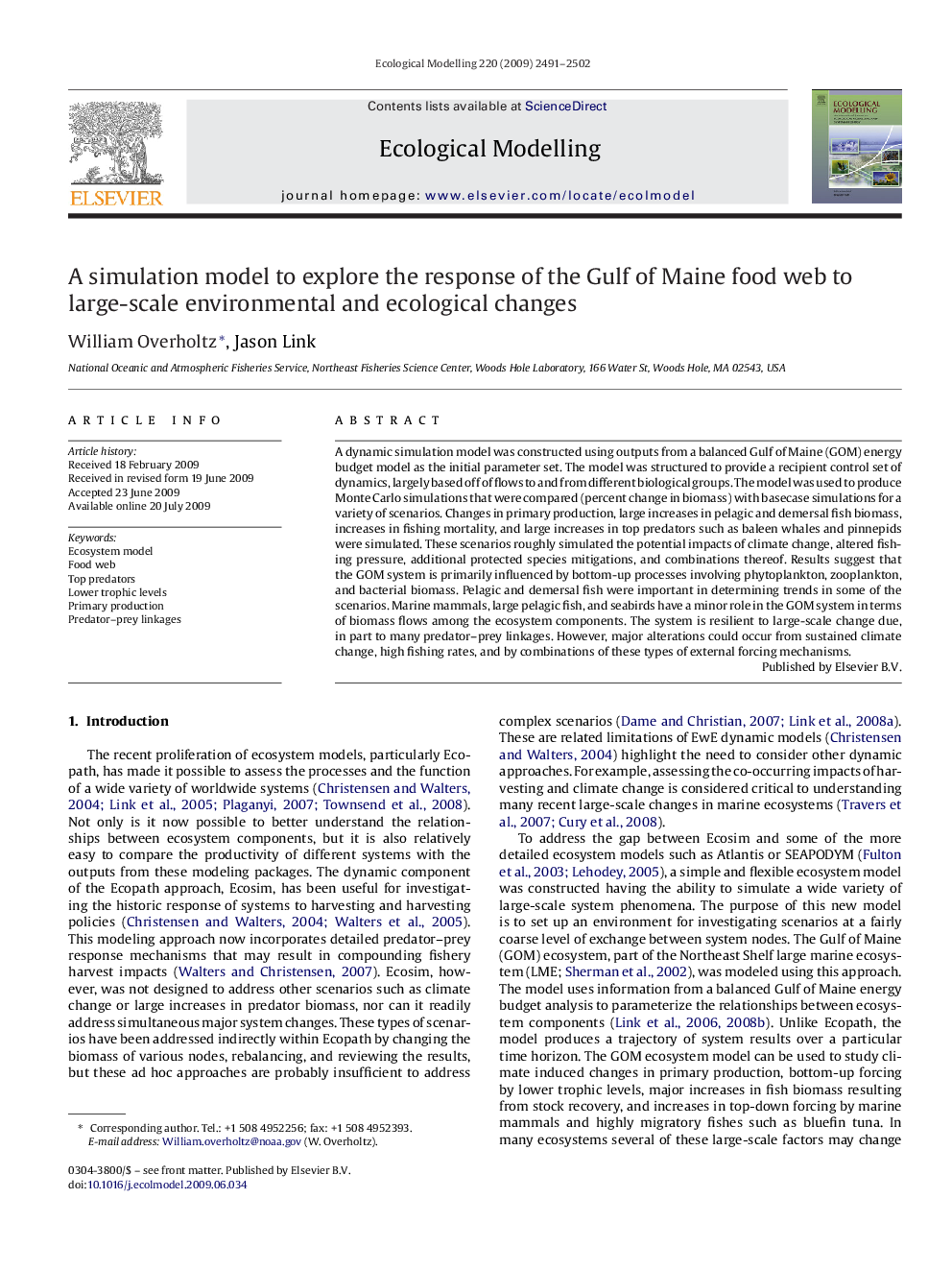| Article ID | Journal | Published Year | Pages | File Type |
|---|---|---|---|---|
| 4377666 | Ecological Modelling | 2009 | 12 Pages |
A dynamic simulation model was constructed using outputs from a balanced Gulf of Maine (GOM) energy budget model as the initial parameter set. The model was structured to provide a recipient control set of dynamics, largely based off of flows to and from different biological groups. The model was used to produce Monte Carlo simulations that were compared (percent change in biomass) with basecase simulations for a variety of scenarios. Changes in primary production, large increases in pelagic and demersal fish biomass, increases in fishing mortality, and large increases in top predators such as baleen whales and pinnepids were simulated. These scenarios roughly simulated the potential impacts of climate change, altered fishing pressure, additional protected species mitigations, and combinations thereof. Results suggest that the GOM system is primarily influenced by bottom-up processes involving phytoplankton, zooplankton, and bacterial biomass. Pelagic and demersal fish were important in determining trends in some of the scenarios. Marine mammals, large pelagic fish, and seabirds have a minor role in the GOM system in terms of biomass flows among the ecosystem components. The system is resilient to large-scale change due, in part to many predator–prey linkages. However, major alterations could occur from sustained climate change, high fishing rates, and by combinations of these types of external forcing mechanisms.
